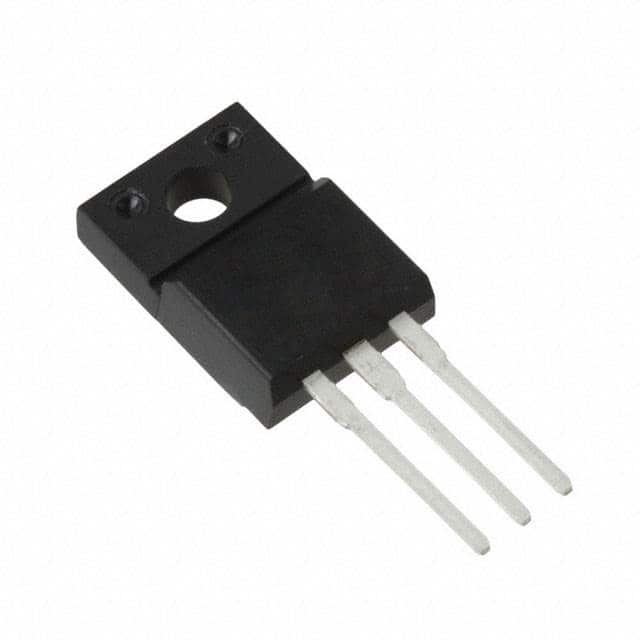Szczegóły produktu można znaleźć w specyfikacjach.

2SC5459(TOJS,Q,M) - Encyclopedia Entry
Product Overview
Category:
The 2SC5459 is a bipolar junction transistor (BJT) belonging to the semiconductor category.
Use:
It is commonly used as an amplifier in electronic circuits and radio frequency applications.
Characteristics:
- High voltage capability
- Low noise figure
- High gain
Package:
The 2SC5459 is typically available in a TO-92S package.
Essence:
This transistor is essential for amplifying weak signals in various electronic devices.
Packaging/Quantity:
The 2SC5459 is usually packaged in reels or tubes, with quantities varying based on manufacturer specifications.
Specifications
- Collector-Base Voltage (VCBO): 120V
- Collector-Emitter Voltage (VCEO): 120V
- Emitter-Base Voltage (VEBO): 5V
- Collector Current (IC): 50mA
- Power Dissipation (PD): 200mW
- Transition Frequency (fT): 400MHz
- Noise Figure: 1.5dB
Detailed Pin Configuration
The 2SC5459 has three pins: 1. Collector (C) 2. Base (B) 3. Emitter (E)
Functional Features
- High voltage capability allows for versatile use in different circuit designs.
- Low noise figure ensures minimal signal distortion during amplification.
- High gain enables effective signal amplification.
Advantages and Disadvantages
Advantages
- High voltage capability makes it suitable for various applications.
- Low noise figure ensures high-quality signal amplification.
- High gain provides efficient signal amplification.
Disadvantages
- Limited current handling capacity compared to other transistors.
- Sensitive to temperature variations.
Working Principles
The 2SC5459 operates based on the principles of amplification through the control of current flow between its terminals. When a small input signal is applied to the base terminal, it controls the larger current flow between the collector and emitter, resulting in amplified output.
Detailed Application Field Plans
The 2SC5459 is widely used in the following applications: - Audio amplifiers - Radio frequency circuits - Oscillator circuits - Signal processing circuits
Detailed and Complete Alternative Models
Some alternative models to the 2SC5459 include: - 2N3904 - BC547 - 2N2222 - BC548
In conclusion, the 2SC5459 is a versatile BJT known for its high voltage capability, low noise figure, and high gain, making it an essential component in various electronic circuits and RF applications.
Word Count: 398
Wymień 10 typowych pytań i odpowiedzi związanych z zastosowaniem 2SC5459(TOJS,Q,M) w rozwiązaniach technicznych
What is the 2SC5459 transistor used for?
- The 2SC5459 transistor is commonly used for amplification and switching applications in electronic circuits.
What are the key specifications of the 2SC5459 transistor?
- The 2SC5459 transistor typically has a maximum collector current of 50mA, a maximum collector-base voltage of 120V, and a maximum power dissipation of 200mW.
Can the 2SC5459 be used in audio amplifier circuits?
- Yes, the 2SC5459 can be used in low-power audio amplifier circuits due to its amplification capabilities.
How should the 2SC5459 be connected in a common-emitter amplifier circuit?
- In a common-emitter amplifier circuit, the 2SC5459 should be connected with its collector to the positive supply voltage, its emitter to the load resistor, and its base biased with a suitable DC voltage.
Is the 2SC5459 suitable for low-noise amplifier applications?
- Yes, the 2SC5459 is often used in low-noise amplifier designs due to its low noise characteristics.
What are the typical operating conditions for the 2SC5459?
- The 2SC5459 is typically operated within a temperature range of -55°C to 150°C and at frequencies up to several megahertz.
Can the 2SC5459 be used in high-frequency RF circuits?
- While the 2SC5459 can operate at moderate frequencies, it may not be suitable for very high-frequency RF applications due to its transition frequency and other characteristics.
What are the recommended biasing arrangements for the 2SC5459 in a common-base configuration?
- In a common-base configuration, the 2SC5459 should be biased with a suitable DC voltage applied to its emitter and a signal input to its collector.
Are there any common failure modes or issues associated with the 2SC5459?
- Common failure modes include thermal runaway under high power dissipation and breakdown due to excessive voltage or current.
Can the 2SC5459 be replaced with similar transistors in a circuit?
- Yes, if the 2SC5459 is not available, similar transistors such as 2SC2240, 2SC1815, or 2N3904 may be suitable replacements depending on the specific circuit requirements.

